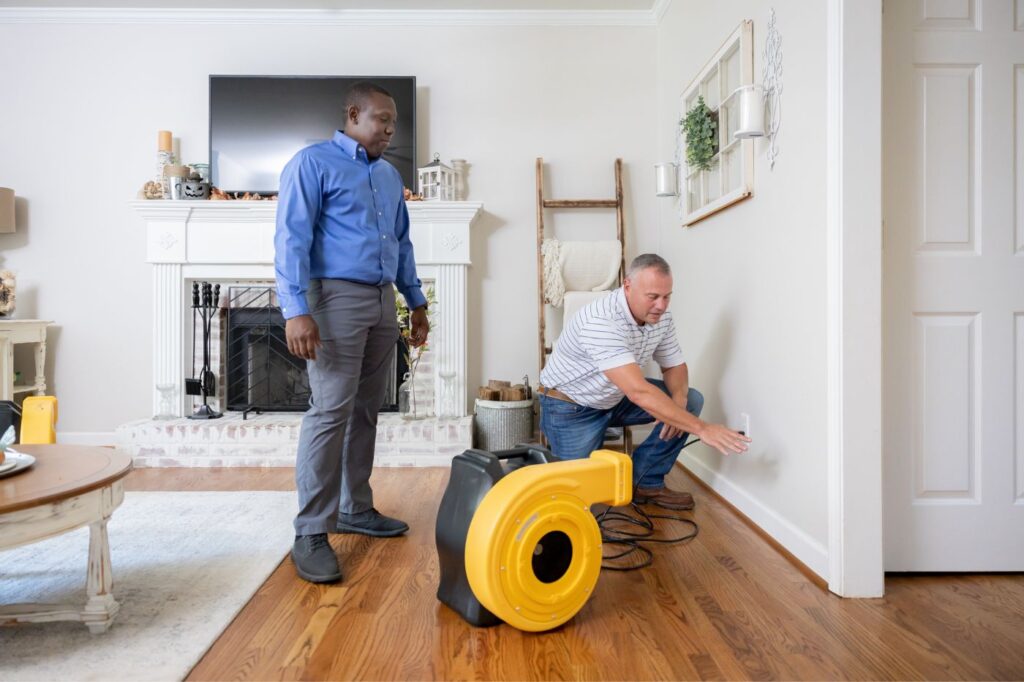For a homeowner, any type of property loss in the aftermath of a natural disaster, fire or other unforeseen event can be overwhelming. Not only do they have to deal with the initial damage, but they also need to mitigate the potential for further losses and additional insurance claims. Carriers should encourage claims mitigation in order to improve customer satisfaction and save themselves and their policyholders time and money.
What is mitigation in insurance claims?
Claims mitigation describes the process of taking steps to reduce the severity of damage or to prevent further damage from occurring. For instance, a homeowner should know how to turn off the water supply in the event of a leak to avoid extensive water damage. Simple steps like these can reduce insurance claims and in some cases, eliminate them.
Both homeowners and insurance carriers have a stake in mitigating risk. In addition to preventing further damage to the homeowner’s property, mitigation measures can:
- Reduce repair costs
- Speed up the insurance claims process
- Reduce the carrier’s exposure to further losses
- Help the carrier keep premiums affordable for their policyholders
In this blog, we will discuss proactive steps homeowners and carriers can take to mitigate risk, ensure a smooth and efficient recovery process, and minimize the financial impact of future losses.
How Homeowners Can Mitigate Risk
1. Assess Your Risk
Before you can build your plan for mitigating risk, you have to identify the hazards that impact your property. For instance, is the region in which you live susceptible to hurricanes, flooding or wildfires? Then you should prepare yourself, your property and those close to you for the relevant risks.
While some hazards simply can’t be prevented, there are generally opportunities to minimize the potential impact on people and property. Following are suggested steps to take to mitigate the risk of a catastrophic impact following one of three common natural disasters.
Wind and Hurricane Mitigation Tips:
The impact of severe winds and hurricanes can be extensive and damaging. High winds can cause structural damage, uproot trees and knock down power lines, resulting in widespread power outages. Hurricanes add to the risk of flooding.
- Install impact-resistant windows and doors: These are designed to withstand high winds and flying debris and can help prevent damage to your home.
- Secure loose items: Outdoor furniture, grills and other items can become dangerous projectiles in high winds. Secure these items or make a list of items to move indoors before a storm hits.
- Trim trees and shrubs: Prune back branches and remove dead trees or limbs that could potentially fall and cause damage to your property.
- Reinforce garage doors: Garage doors are often weak spots in homes during severe weather events. Reinforce them with braces or install a wind-resistant garage door.
- Strengthen your roof: Have your roof inspected to ensure that it is up to code and can withstand high winds. Consider installing hurricane straps or clips to reinforce your roof structure.
Flood Mitigation Tips:
Floods can be caused by a variety of factors, such as heavy rain, a storm surge, or a dam or levee failure if you live near a river. Flooding can cause significant structural damage, mold growth or loss of personal belongings. There is also a risk that contaminated substances could be present in floodwaters.
- Elevate appliances and utilities: Raise electrical systems, mechanical units and other utilities above the flood level to prevent water damage.
- Install backflow valves: These valves can help prevent sewage backup into your home during a flood.
- Use flood-resistant materials: Consider using materials that are resistant to water, such as waterproof flooring and water-resistant drywall.
- Seal cracks and openings: Seal cracks and openings in your foundation and walls to prevent floodwater from seeping in.
- Create proper drainage: Ensure that gutters and downspouts are clean and in good condition, and consider installing French drains or other drainage systems to help prevent water from pooling around your home.
Fire and Wildfire Mitigation Tips:
Fire can spread quickly and unpredictably, causing significant damage to homes and properties.
- Create defensible space: Clear flammable vegetation and debris from around your home, creating a buffer zone to help prevent fire from spreading.
- Use fire-resistant materials: Consider using materials such as metal roofing or fire-resistant siding to help protect your home.
- Keep gutters and roofs clear: Clean gutters and roofs regularly to remove debris that can ignite during a fire.
- Install ember-resistant vents: Embers from a wildfire can enter your home through vents. Consider installing ember-resistant vents to help prevent this.
- Have an evacuation plan: If you live in an area at high risk for wildfire, it’s important to have an evacuation plan in place, including a designated meeting place and an emergency kit.
- Maintain your landscaping: Keep your landscaping well-maintained and watered, and remove dead or dying trees and shrubs.
2. Prepare Your Emergency Plan and Kit
Having a well-thought-out plan can help you react quickly and safely in the event of an emergency, giving you, your loved ones and your property a better chance at a positive outcome. An emergency plan should include emergency contacts, evacuation routes and meeting places, as well as the location of important home utilities and shut-off valves. An emergency kit should include essentials such as water, non-perishable food, flashlights, first-aid supplies, safe walking shoes and extra clothing.
3. Understand Your Insurance Coverage
First, having insurance in place is one critical step to mitigating risk to your property. Review your insurance policy with your agents to understand your coverage, limits and deductibles. Make sure you are adequately covered for risks that apply to your property, and be aware of any exclusions or limitations that may affect a claim.
4. Report and Document After a Loss
In the event of a loss, report any incidents or damages to your insurance company as soon as possible. Delaying reporting can cause more damage or result in the denial of your claim.
Also, take pictures or videos of the damages, and keep a record of all communication with your insurance company. This will help support your claim and enhance communication with your insurance carrier.
5. Mitigate Further Loss
If it is safe to do so, there may be steps you can take to prevent further damage to your property. For example, if your roof is damaged, cover it with a tarp or other protective material to prevent water damage. Keep a record of any expenses incurred to mitigate further loss, as your insurance policy may cover these expenses.
How Insurance Carriers and Claims Adjusters Can Help Mitigate Risk
1. Communicate Effectively With Homeowners
Unfortunately, one common problem that homeowners and insurance carriers face when it comes to preventing additional loss is a lack of communication. Homeowners may not fully understand their policy coverage or what steps they need to take to mitigate risk. Additionally, there may be disagreements about the scope of damage or necessary repairs, which can lead to delays in the restoration process.
2. Proactively Educate Policyholders
Insurance carriers can add a lot of value by providing their policyholders with risk mitigation resources. This could include damage mitigation checklists or incentives for homeowners who take proactive measures.
3. Build Trust With Policyholders
With the right vendors and technology, carriers and adjusters can help provide homeowners with a clear view of the restoration process and timelines. This helps build confidence in the quality of service and improves overall satisfaction.
At Hancock, we build custom integrations to fit your existing internal systems, so you can speed up claims processes and close claims right the first time. In one centralized system, adjusters can immediately schedule service, communicate with all involved parties, and receive more complete and accurate status checks and reports.
4. Work With Reliable Partners and Professionals
From the first inspection to complete restoration, homeowners and adjusters want to know that the work will be done efficiently and reliably to prevent further damage or claims.
Hancock maintains a nationwide network of highly vetted experts and repair professionals ready to deploy at a moment’s notice. Our Full Lifecycle Support Under One Roof gives adjusters a place to turn when they need to resolve claims quickly and accurately from start to finish. With the help of our tech-forward approach, our carrier partners have seen a reduction in claims cycle times by up to 50%, as well as increased accuracy and reduced payouts.
Some losses can’t be prevented. But, through prudent action on the part of the homeowner and the carrier, escalated losses and costs can be avoided. See how a partner who combines service and state-of-the-art technology can help.


